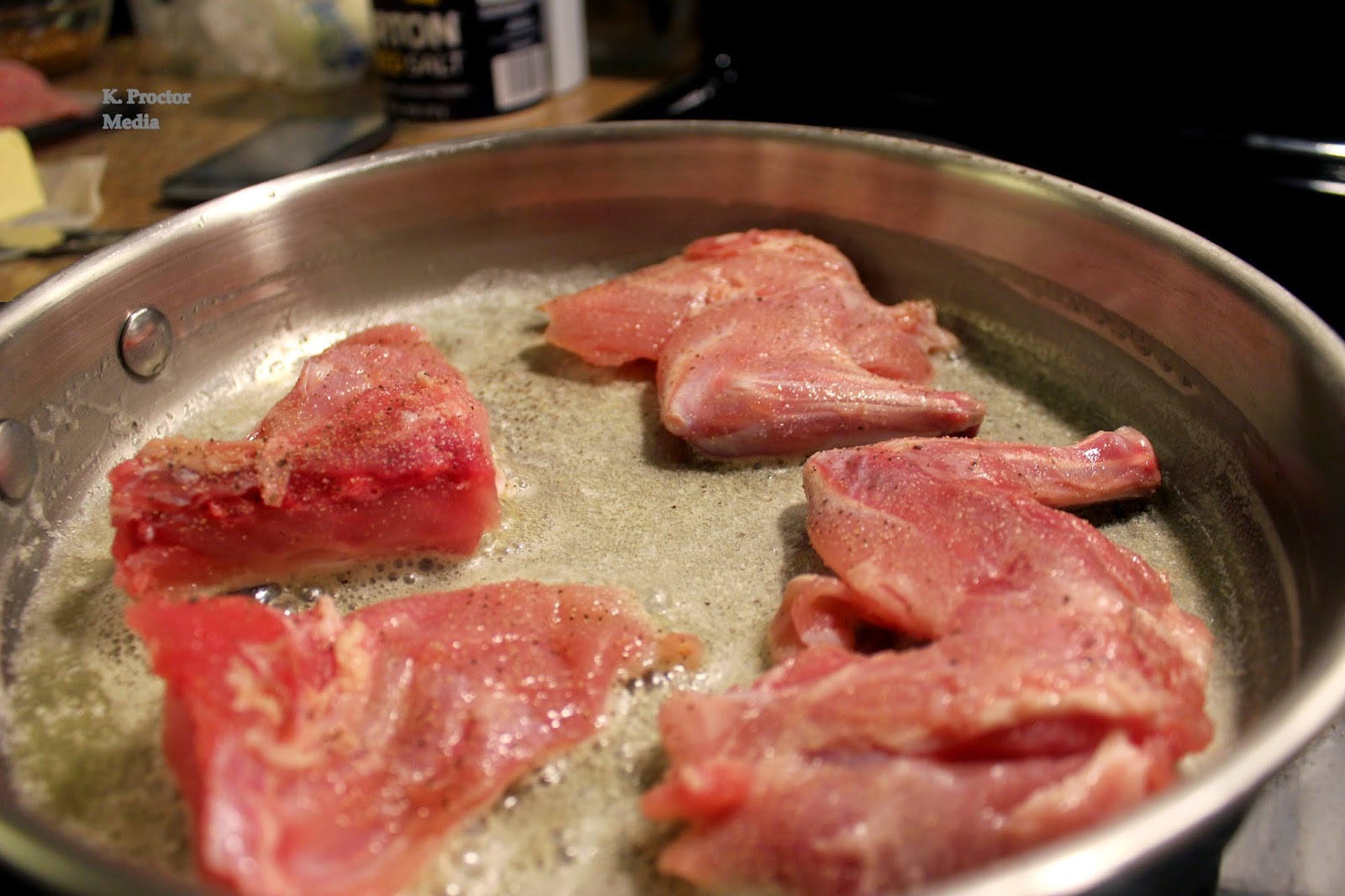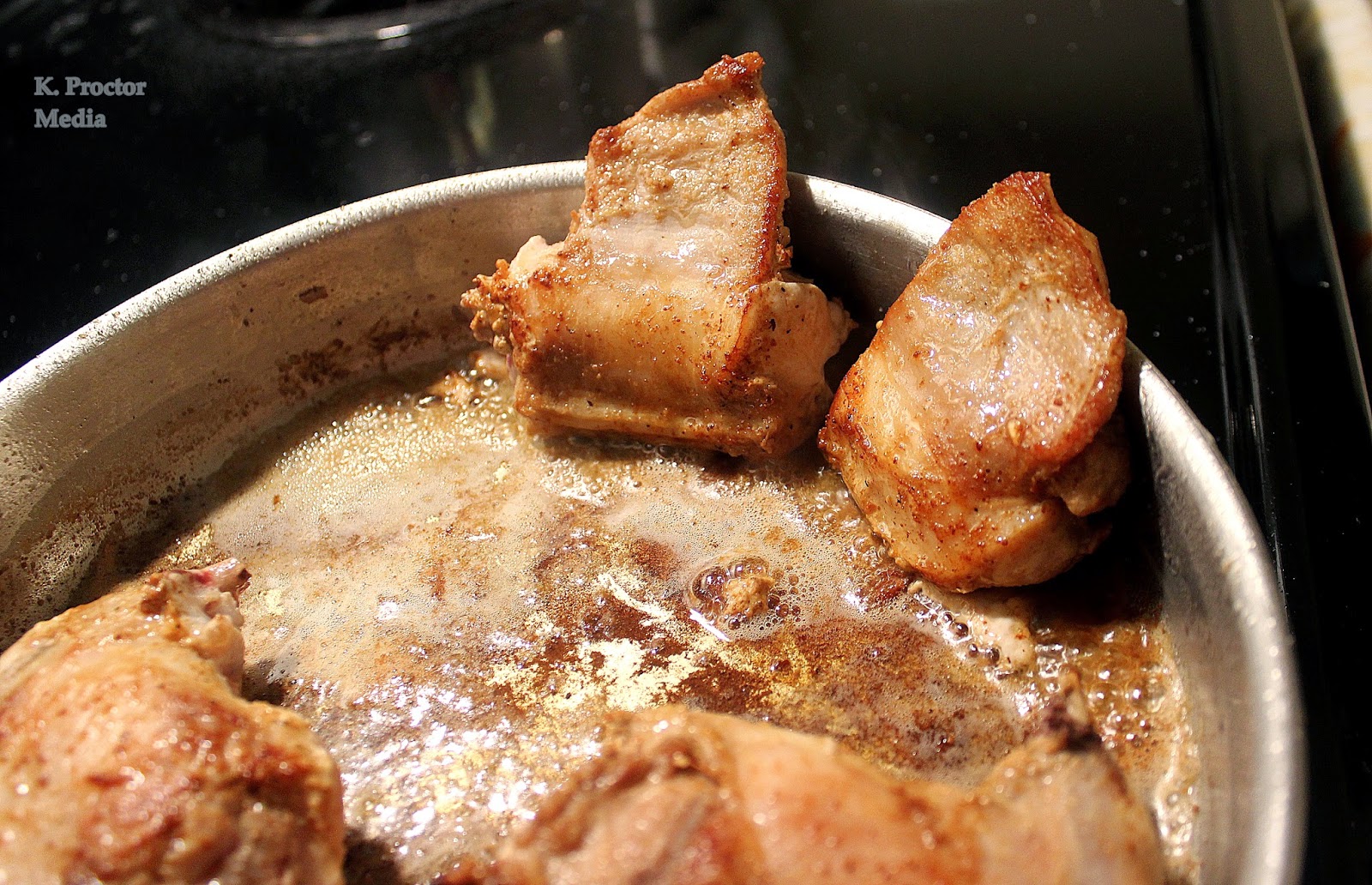I've been meaning to cover fish for some time, and every time I cook fish I forget to whip out my camera (which at this point, almost has a permanent home within my kitchen) to document the process. No longer! As I was prepping dinner on Sunday I reminded myself to cover it with the hopes that the recipe I was concocting would not be a flop and I am proud to say it wasn't a flop in the slightest. Even the left overs were good, and left over seafood is rarely tasty.
This meal consisted of three different proteins, all of which were seafood, though I can imagine the shrimp and scallop mix would be tasty on top of steaks, chicken, rice.. pretty much anything, really, and the Tilapia certainly stands on its own, but if you mix them together it's a fantastic fish dish ready to make your taste buds happy. If you're not big on spicy, tone down the amount of seasoning, or if you're not big on Cajun seasoning, this would work well with a garlic blend, too.
Cajun Seafood in Cream Sauce
If you're working with frozen seafood, the first thing to do is thaw it. The best way to do this is overnight, in the fridge with lots of paper towels in a Tupperware container... but I slacked off and did no such thing. Instead, I last minute tossed the frozen shrimp and scallops in a strainer and placed it under running water. If you do it this way, don't forget to move the basket and contents around so that everything thaws.
Once you get things thawed, in another strainer or in a large bowl separate your seafood onto layers of paper towels. Peel your shrimp at this point. I put in two layers of scallops and one layer of shrimp, each layer separated by more paper towels.

Next, oil your pan and add add your butter. You can skip the butter if you really want to, but it adds a wonderful flavor to the shrimp and scallops. Put the heat on around medium.
Add in your seasonings. I used a little bit of Old Bay, a good bit of Cajun, garlic and a dash of salt.
Add in your shrimp in a single layer, If they don't all fit without crowding do them in two or more batches. At this point go ahead and preheat your oven to 425 degrees.
Cook on each side about a minute and a half or until they're turning a pink color and no longer translucent. You don't have to have them completely cooked, since they will be returning to the pan later.
Once the centers no longer look translucent and, for a lack of a better word, goopy, remove them to a bowl.
If you need to, add more oil or butter.
Now layer in your scallops. You can do this the neat and organized way and put each one in individually and turn them one at a time, or you can just toss them in, spread them out and then jostle them about the pan. I did it both ways and found that I got them a little browner the meticulous way, but that they tasted all over the same either way.
Cook them until they're just browning and no longer translucent or super squishy like they were when they were raw and remove them to the bowl as well.
Once you've repeated the steps with all the batches of shrimp and scallops, saute your garlic and shallot in the pan. (I forgot to do this and had to do it on the side.. do it in the pan, the flavors will be better).
Once they're browned and slightly softened, add the two tablespoons of white cooking wine and deglaze the pan.
Next, turn the heat to a medium-low and add in your heavy whipping cream. I used about two and a half cups initially. Stir this in and let it all come together. It should lightly simmer but never come to a boil.
While the sauce is simmering, prep your fish. Lightly spray your baking dish to decrease the chances of the fish sticking and season each fillet. Here again, I used salt, pepper garlic, a dash of old bay and a generic Cajun seasoning. You can go as light or heavy as you'd like on the seasonings. Once you're seasoned up, place them into the oven for about 15 minutes. Start checking them around 12 minutes in if your oven cooks quickly. You want it to flake easily with a fork without being mushy or squishy.
During the time it takes to cook the fish, add the shrimp and scallops to the sauce and let it come to a simmer. If you want, add in 1/4 c grated Parmesan cheese to the sauce to add a little variation to the seasonings. Stir this frequently.
Once the fish is done, plate each fillet, then top with the seafood sauce and enjoy!
Bare Bones Version:
You will need:1 lb fish fillets like Tilapia or Flounder
1lb shrimp uncooked
1lb scallops, preferably bay
2 1/2c heavy whipping cream
1/4 c Parmesan Cheese
2 tbsp white wine
2 garlic cloves (chopped)
1 shallot (chopped)
butter
Olive oil
Cajun seasoning
Salt
Pepper
Garlic
Old Bay seasoning
How to:
First, thaw all your seafood if you're not working with fresh. If you're working with head-on, veined shrimp, cut off their heads and devein them. Then peel your shrimp and layer the shrimp and scallops separately in a paper towel lined bowl, each layer separated by more paper towels.
Preheat oven to 425.
Next, heat your oil and butter in the pan over medium heat. Add your seasonings to your liking. Add shrimp and cook until just turning pink and the centers are just turning white. Flip and repeat until the center is opaque.
Repeat as needed for all shrimp, keeping them in a single layer in the pan. Repeat the process for the scallops.
Remove all to a bowl together to wait.
Add garlic and shallot to the pan and saute until just browned.
Add white wine and deglaze pan.
Add cream and stir, add more seasoning if needed. Bring to a light simmer, but never to a boil.
Prep fish in pan with seasonings and put into oven for anywhere between 12 and 25 minutes depending on your oven and how you like your fish. Fish is done when it flakes easily with a fork. For a more done fish, make sure none of it is squishy.
While fish is cooking, add shrimp and scallops back to the pan and finish cooking.
Add Parmesan cheese to the sauce if desired.
Once fish is done, plate each fillet and top with seafood sauce.
Happy eating!





























































